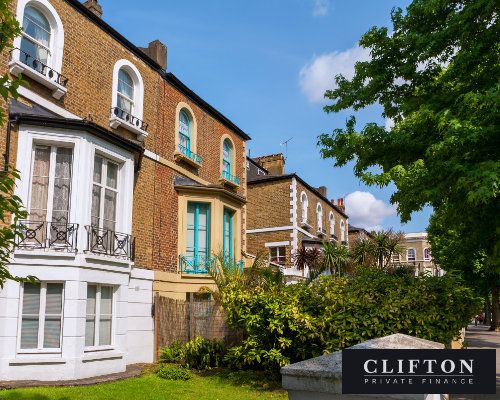Understanding Equity in Your Buy-to-Let Property
Secured loans are based on equity - the amount of money you hold in your property. For your primary home, initially purchased with a residential repayment mortgage, equity builds up every month as you pay a little more of the mortgage principal; for a buy-to-let property however, the mortgage is more than likely an interest-only loan. It’s a structure designed for keeping the monthly payments low so that you get the most out of your rental income, but it does mean you’re never repaying that all-important principal - you’re not building up equity.
And, logically, if you’re not increasing equity, there’s nothing there to secure a second loan on.
From a lender’s perspective, as long as there’s a suitable amount of equity available in the property, there’s value there that’ll mitigate their risk and provide the essential security for a loan. You might still have a sizeable mortgage tied to the house, but if there’s equity above that, you’re good to go.
First-charge Mortgage vs. Second-Charge Loan
When you look to raise new capital from your rental property, there are two main ways to do so - a full remortgage, or a secondary secured loan.
Your primary mortgage is your first-charge loan. It occupies a special place in the priority of repayment, and will be covered first should anything happen. You can only have one first-charge loan.
A second loan that uses the remaining equity as security is a second-charge loan, this is subordinate to the first-charge loan. In the case of a repossession, the second-charge loan will only be repaid once the first-charge loan is fully cleared.
Should you take out more loans, they become third-charge, fourth-charge, and so on - though these are very rare!
Because second-charge loans are higher risk for the lender, they have slightly higher interest rates. However, they can be obtained relatively easily, without the need to disturb the main first-charge mortgage.
When you take out a secured loan for more capital against your buy-to-let property, you will either:
- Replace the existing first-charge mortgage with a completely new, larger mortgage - a remortgage.
- Add a second-charge mortgage to the property.
Second-charge Loans - Interest-Only or Repayment?
Most BTL mortgages are interest-only. As discussed above, an interest-only mortgage ensures the maximum amount of profit each month by keeping repayments as low as possible. Interest-only mortgages have an exit strategy, meaning the capital is repaid in full at the end of the term, either by selling the property, or through replacement finance. If you borrow £200,000 interest-only, you will only pay the accrued interest each month and still owe the principal £200,000 at the end of the term.
Many landlords assume that any second-charge loan on the BTL property will be interest-only to match their primary mortgage. However, second-charge BTL mortgages can be either interest-only or repayment, based on your circumstances and needs at the time.
The loan term is also a factor, as second-charge loans should be timed to end either before, or at the same time as the first-charge mortgage. This is so they can share the exit strategy (or be repaid before an exit strategy is needed). Lenders will want to make sure a clear exit is in place for any interest-only loan.
Interest-only vs. repayment BTL loans
|
Consideration |
Interest-Only |
Repayment (Capital + Interest) |
|
Monthly repayments |
Lower |
Higher |
|
Maximum term |
Equal to first-charge mortgage |
Equal to first-charge mortgage |
|
Best for… |
Keeping monthly cash flow low |
Rebuilding equity over time for future use |
Renovations - The Primary Use for a BTL Second-Charge Loan
While there is no limitation on the use of the capital obtained through a second-charge loan (within legal regulations), most BTL second-charge loans are obtained to undertake work on the property. This makes sense as it keeps the property paying for itself, increases the value of your investment, and provides a better rental yield.
Managing your rental property can be challenging. Building problems are likely to occur at some point during your investment lifetime, often with the need to raise a significant sum at short notice. This may include:
- Meeting changing government regulations for energy efficiency, or EPC compliance, etc.
- Fixing overdue repairs, such as a new roof, or damp proofing.
- Modernising areas, such as installing a new kitchen or bathroom.
- Funding ongoing maintenance, for example, drain cleaning, painting and decorating, plaster work, etc.
- Refurbishments to boost the property value, such as installing shutters, new central heating, or air conditioning.
- Large-scale extensions and construction, including loft conversions, conservatories, or en suite bathrooms.
In these cases, a BTL second-charge loan is often the most effective way to meet your capital needs. A well-planned investment in this way can often pay for itself in the long term, increasing the property value beyond the cost of the renovations.
Why Not Just Remortgage?
Making the choice between a second-charge loan and a full remortgage can involve looking at multiple factors:
- Not affecting the existing mortgage rate - Your current BTL rate may be fixed for a number of years. If interest rates have risen, then it is unlikely you’ll get a better rate today, and losing that superior rate could be costly. A second-charge loan doesn’t have any impact on your current rate, where a remortgage effectively overwrites it. Of course, this may be an advantage when market interest rates are lower than your existing one.
- Avoiding fees - Your mortgage may have early repayment charges (ERCs) that will be due if you change mortgage too soon. A second-charge loan won’t trigger these expensive fees.
- Different repayment structure - You may want to repay the additional loan sooner, setting it up as a capital-plus-interest repayment structure rather than adding it to your existing interest-only loan.
- Simpler administration - A remortgage will involve a more complex level of paperwork and stringent credit and affordability checks. While a second-charge loan also involves due diligence on the part of the lender, it is typically less administration intensive than a full remortgage.
Speak to a Clifton Private Finance mortgage advisor to discuss your current situation. We can look at all options, and help you make an informed decision regarding your loan structure.
Second Charge Mortgage Case Studies
Bridging Finance - A Powerful Alternative Second-Charge Loan
Bridging finance represents another second-charge loan that may utilise your BTL property as security. A short-term funding product designed to seize opportunities in the property market, bridging finance offers an exit-based structure with unique underwriting that bypasses credit scores and affordability tests in preference for security-only based assessment.
While bridging finance is unsuitable for general use and most refurbishments, there are two scenarios where it shines for landlords:
- To leverage equity in your BTL investment to buy an additional property - You can obtain bridging finance to buy a new property, using both the purchase and your existing rental property together as security for the loan, boosting your maximum loan size.
- To obtain capital quickly for renovations prior to the property sale - If you are planning to sell your property but want to maximise its market value by fixing it up and modernising before it goes on the market, bridging finance can provide the money needed for the construction work.
Bridging finance should only be used when a clear exit strategy is in place, whether a property sale or long-term refinancing. Speak to one of the Clifton Private Finance bridging team to discuss your bridging needs, or explore our comprehensive guide to bridging loans for more details.
Second-Charge Loans for Cash
While renovations forms the most common use for a BTL second-charge loan, they are flexible, with few limitations on use. Landlords can obtain capital through a second-charge loan secured on their rental property for:
- Debt consolidation
- Deposit on another property
- Other large-scale purchase (such as a car)
- Paying off an existing home mortgage
- Other personal reasons
- Business investment (with some limitations)
It’s important to ensure that a second-charge loan on your buy-to-let property is the right funding product to meet your needs. Before going forward, speak to a Clifton Private Finance advisor and let us discuss the wide range of options that will be available to you.
How Much Can You Get With a Second-Charge BTL Loan?
Lenders will consider multiple details when determining your loan eligibility, including the property’s rental yield, current tenancy status, and your credit status. However, the largest single factor is the loan-to-value (LTV) of the combined loans secured by the property. With BTL properties, the maximum LTV available is capped at around 75% to 80% (depending on the lender). It’s important to understand that this is a combined LTV that includes the existing first-charge mortgage.
For example, a property worth £400,000 that currently has a mortgage secured of £250,000 (62.5% LTV) would be able to secure an additional second-charge loan of £50,000. This would bring the combined loan total to £300,000, or 75% LTV.
If both the first- and second-charge mortgages are structured as interest-only, no other equity from this property would be able to be released in the future unless its market value increases. At £450,000, the total combined loan value possible would increase to £337,500, meaning an additional £37,500 third-charge loan would be possible.
It’s important to understand that even if a property has a substantial amount of ‘free’ equity, the 75% maximum LTV rule may still prevent additional borrowing.
Portfolio Mortgages
Landlords with three or more rental properties should consider a portfolio mortgage in place of existing first- and second-charge mortgages. A portfolio mortgage is a single, larger mortgage that encompasses all the properties, combining all existing loans into a single product.
Portfolio mortgages improve cash flow, allow for easy administration, and allow you to leverage equity across multiple properties when expanding your property empire.
Look to our knowledge base to learn more about portfolio mortgages, and speak to a specialist CPF mortgage advisor to shift to a cost-effective portfolio mortgage for your growing landlord business.
Secured BTL Loans with Clifton Private Finance
At Clifton Private Finance, we will help you obtain the best possible finance for your situation. With access to the wide UK marketplace of mortgage lenders, we open the doors to the best rates and the most flexible terms. Our experts will consider your needs in a holistic fashion, taking consideration of the finer details to help you determine the right secured loan product for you. Arrange for a free consultation with CPF today.











